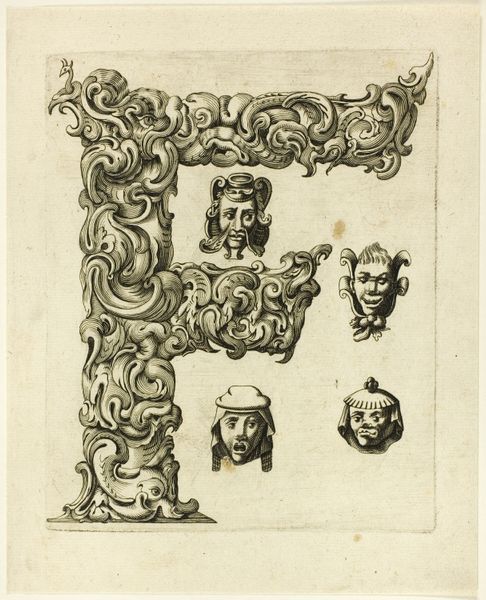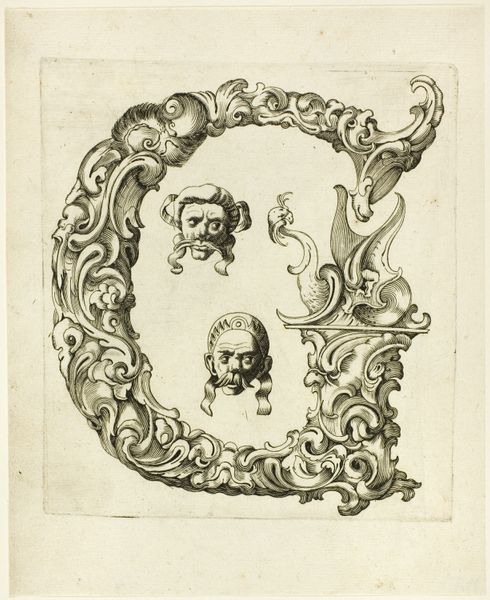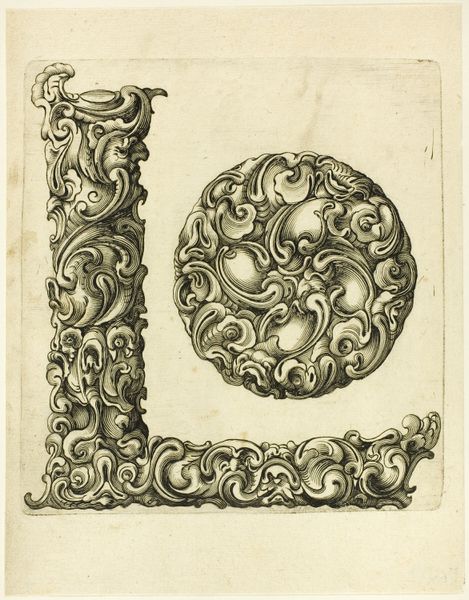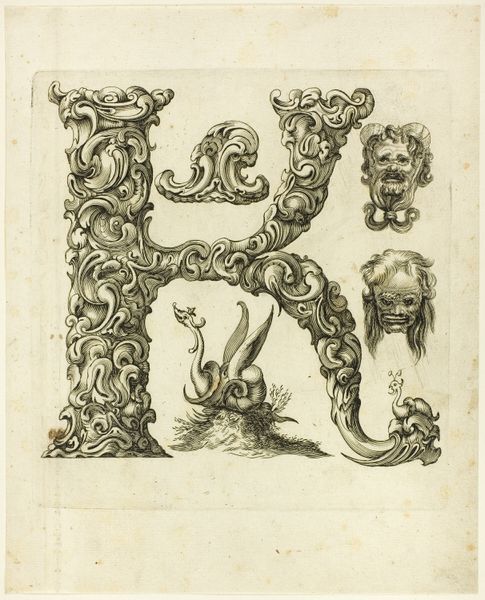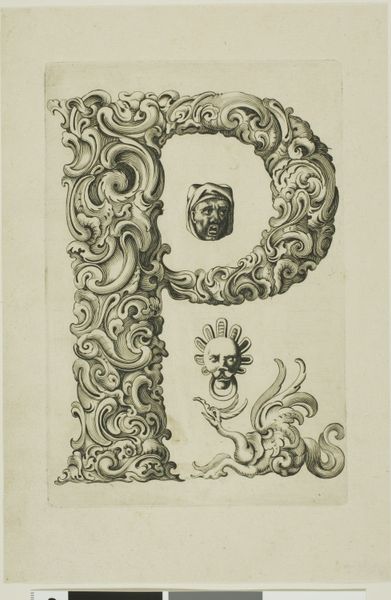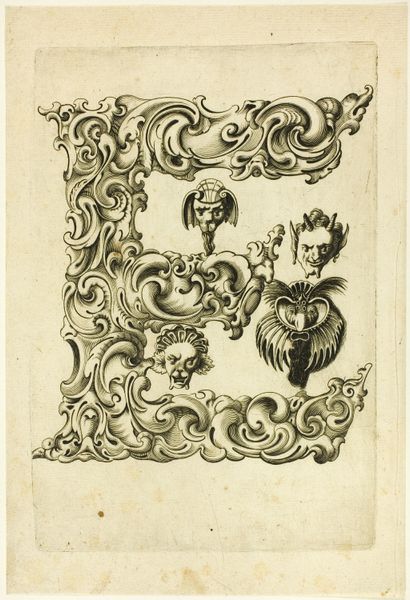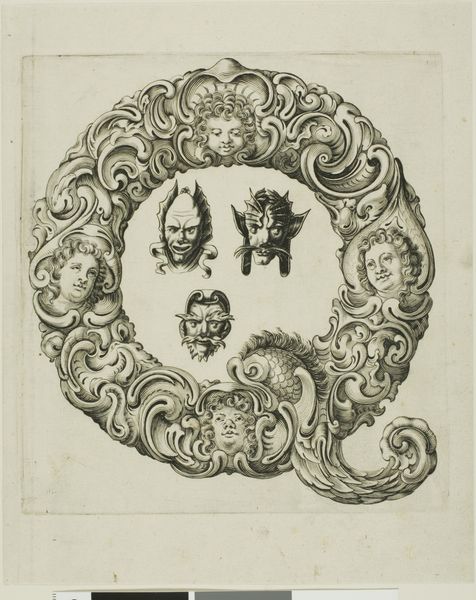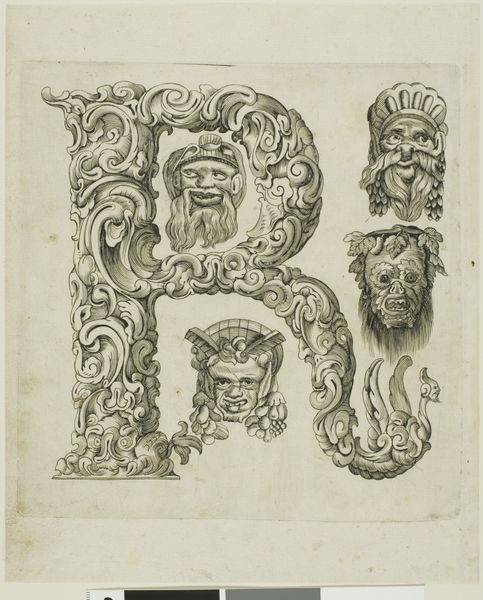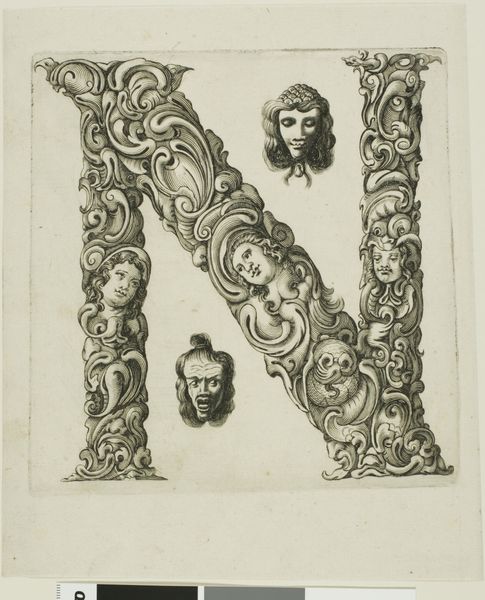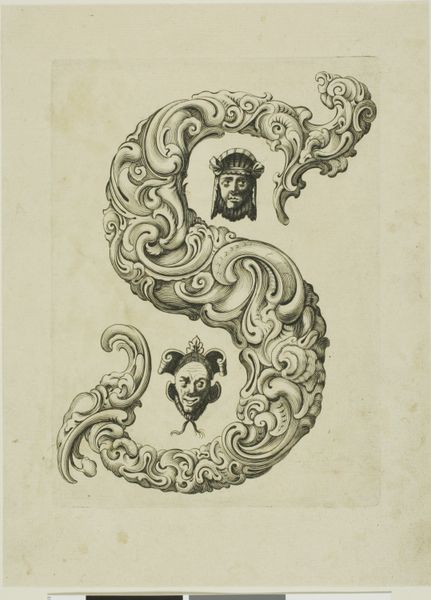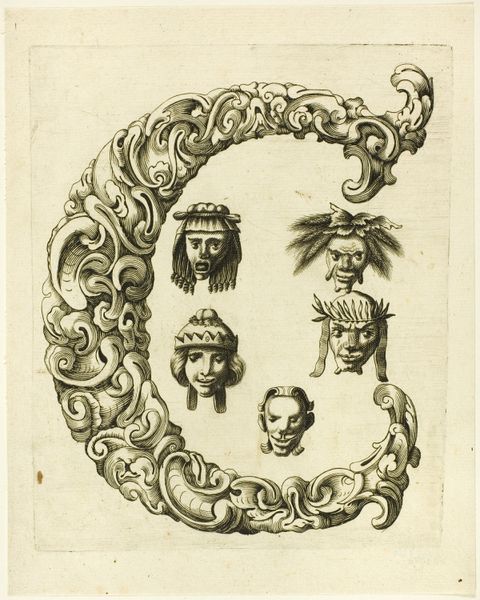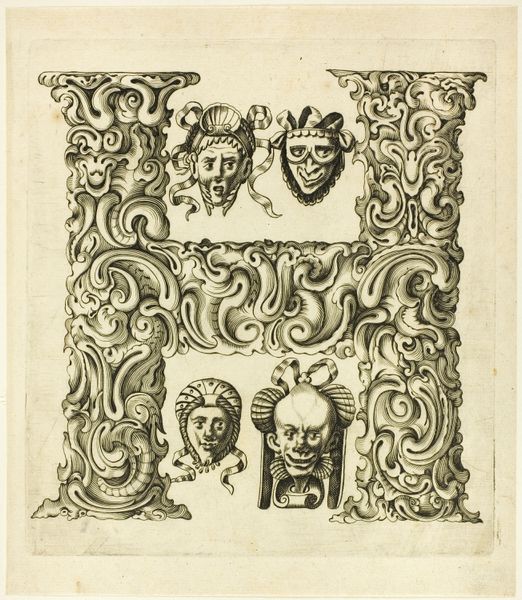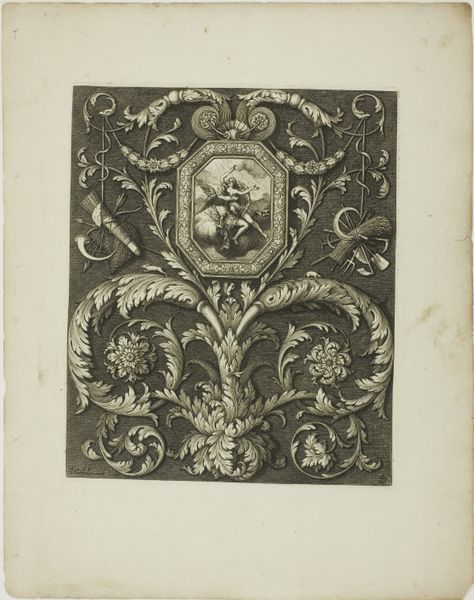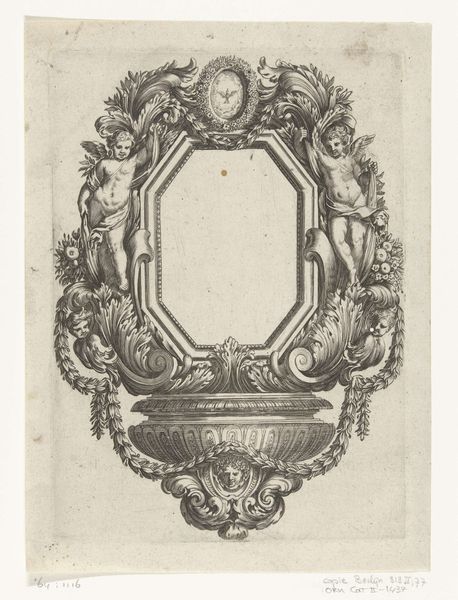
drawing, print, paper, engraving
#
drawing
#
baroque
# print
#
paper
#
form
#
line
#
engraving
Dimensions: 233 × 169 mm
Copyright: Public Domain
Editor: We're looking at "Letter B," a 1630 engraving on paper by Peter Aubry, at the Art Institute of Chicago. It's incredibly ornate, like a letter pulled from the architecture of a palace. All those swirls and the little faces…it feels almost grotesque in its opulence. What do you see in this piece? Curator: I see a potent commentary on power and representation embedded within the very structure of the alphabet. The letter 'B,' transformed into this elaborate display, speaks volumes about the Baroque era's fascination with hierarchy and the role of symbols in maintaining social order. Look at how the grotesque masks and the idealised faces are integrated. It makes me think of class disparities, doesn't it? Editor: That's a really interesting point. I hadn't considered the social aspect so directly. I was focused on the aesthetics of it. What makes you connect the faces to class disparity? Curator: The grotesque often served as a reminder of the 'unruly' masses, those outside the circle of power, while the idealized portraits reflect the aspirations and self-image of the elite. Peter Aubry uses form, literally the shape of the letter itself, to reinforce the dominant ideologies of his time, with gender and status being prominent themes in representational artistic composition of the Baroque era. Does that recontextualize the imagery for you? Editor: It definitely does! Now I see the ‘B’ not just as a letter, but as a structured, almost enforced, perspective. The rigid letter form confining organic faces of people in a sort of hierarchy… It really subverts my initial read. Thanks! Curator: Absolutely. It's crucial to consider art as part of the broader cultural and power systems in which it exists and to use our own perspectives to bring meaning to older works. The ‘B,’ in its extravagant form, still encourages critical thinking. Editor: I learned so much. I'll remember to see artworks not as single beautiful moments in time but instead in their role with gender, race and politics of that period.
Comments
No comments
Be the first to comment and join the conversation on the ultimate creative platform.
